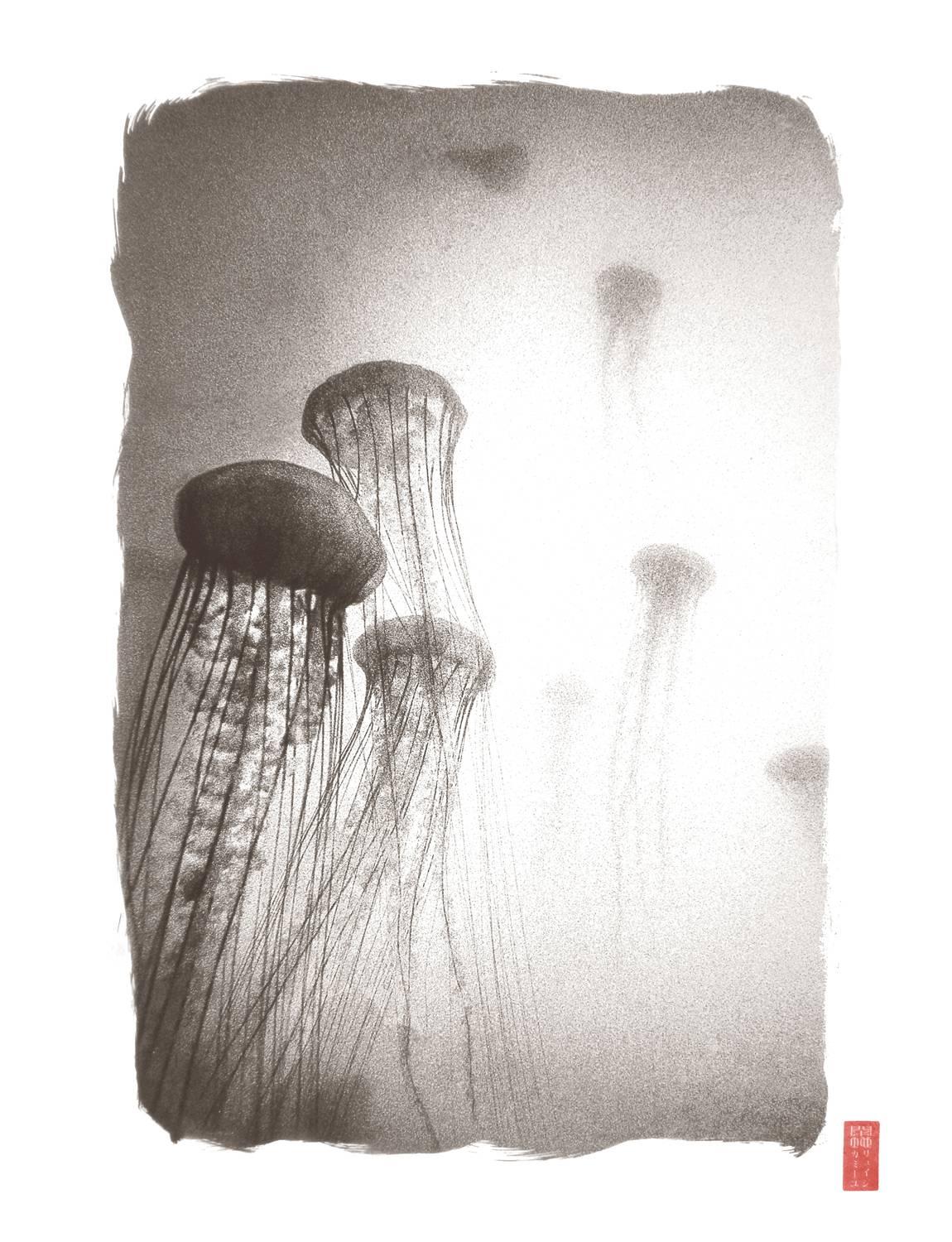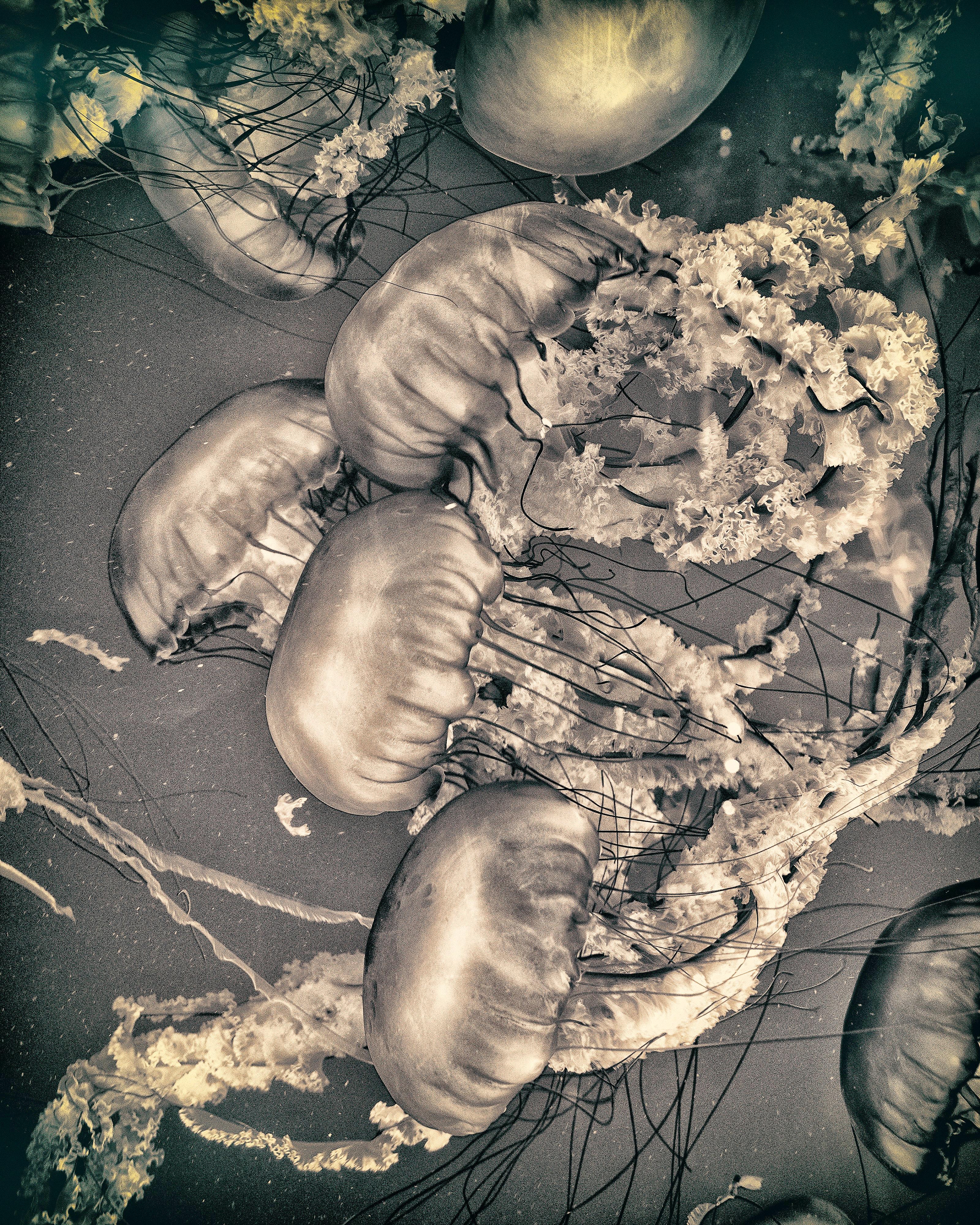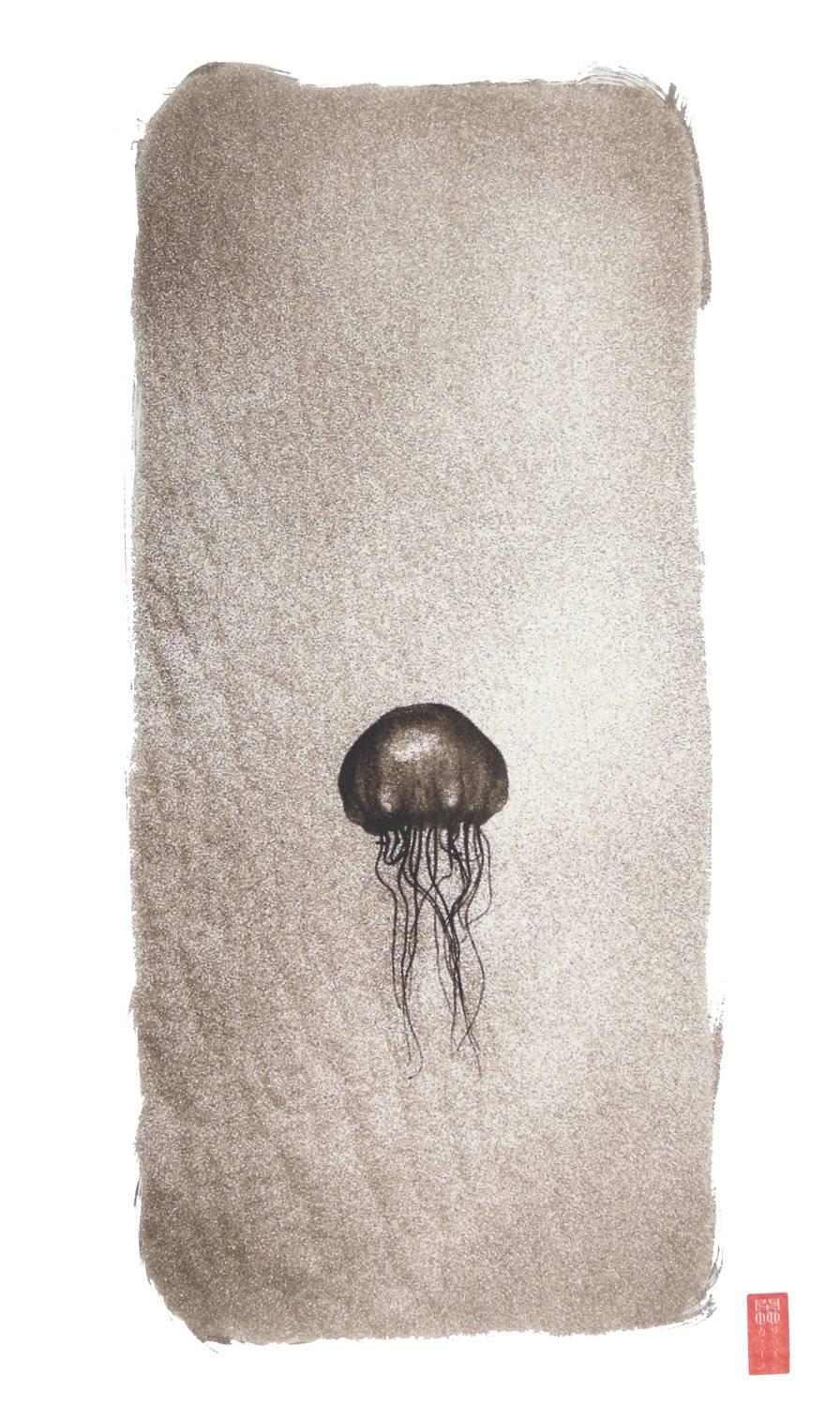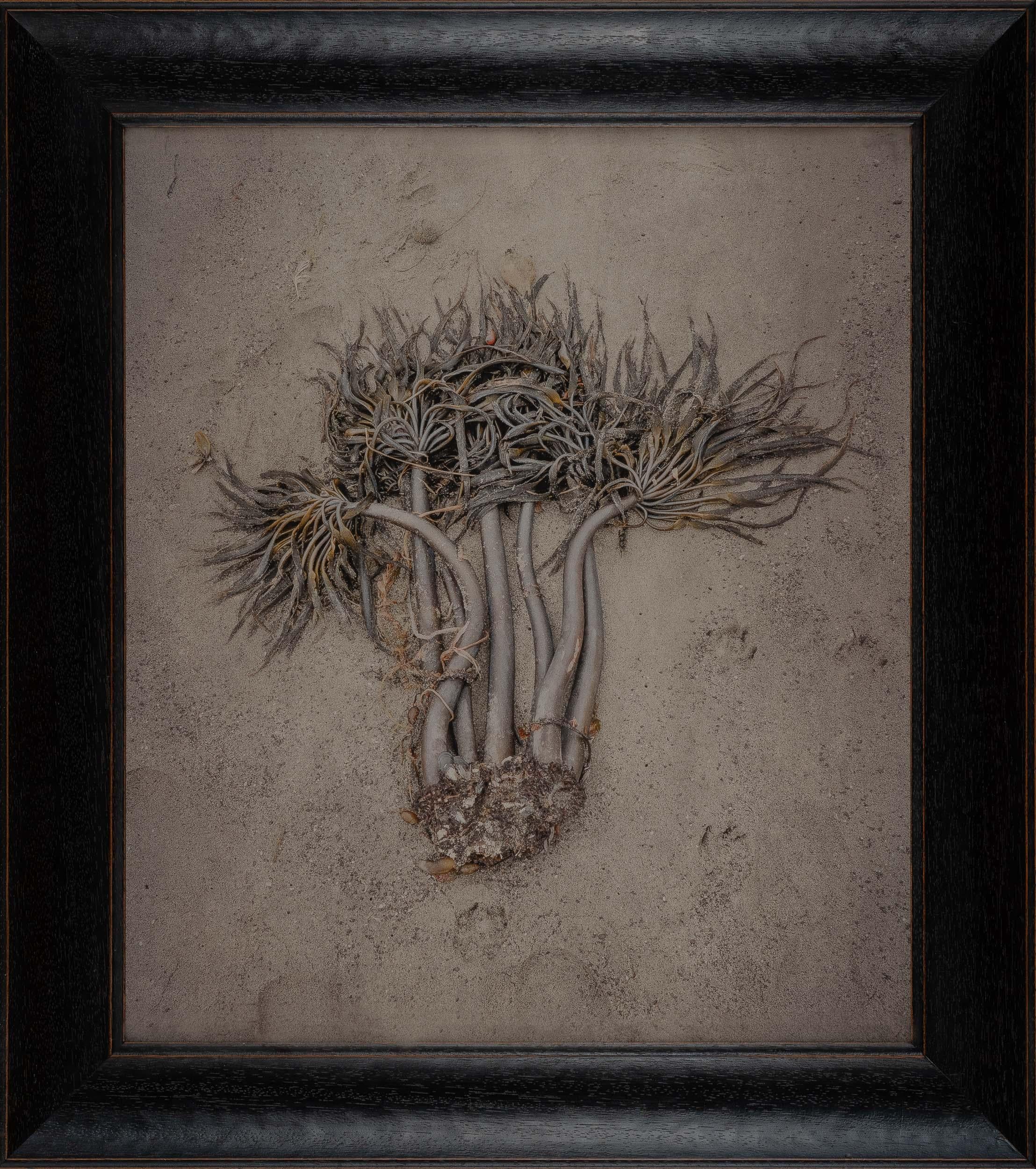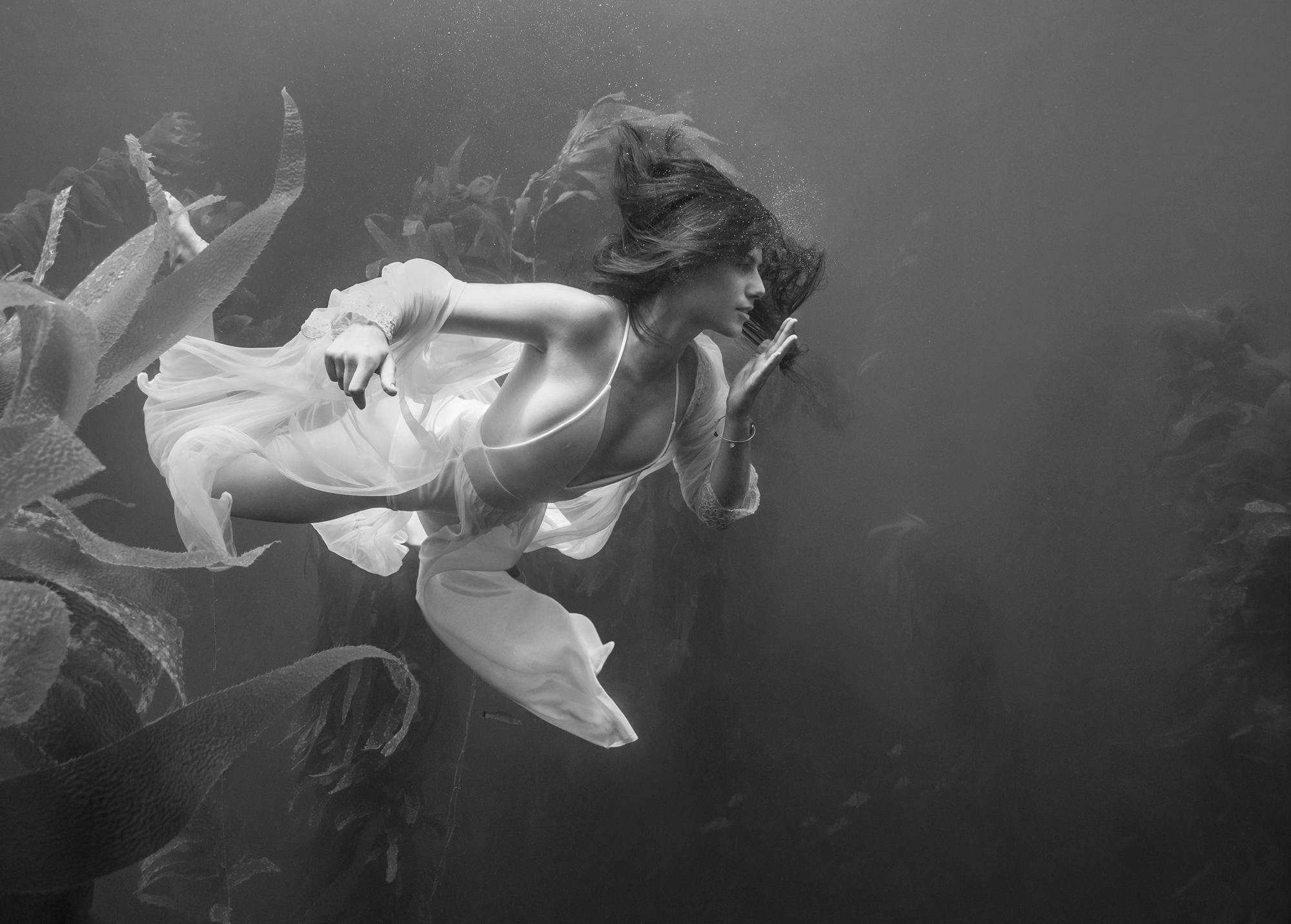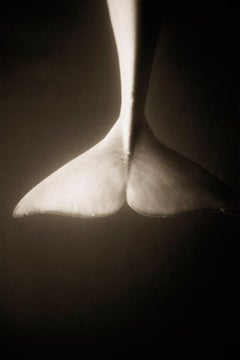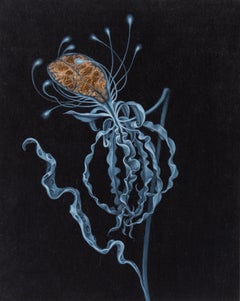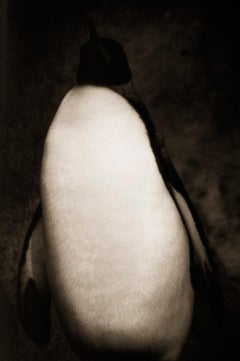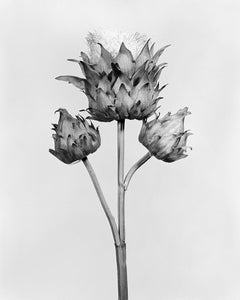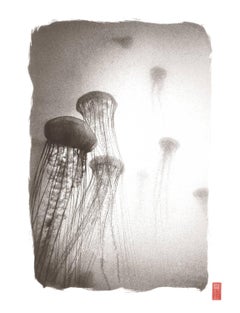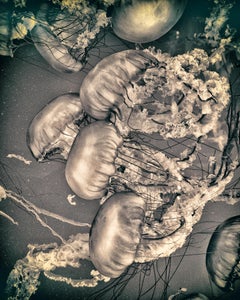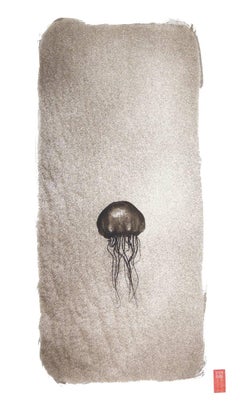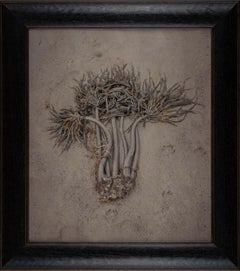Items Similar to Brown Sea Nettles (Chrysaora fuscescens)
Want more images or videos?
Request additional images or videos from the seller
1 of 5
Henry HorensteinBrown Sea Nettles (Chrysaora fuscescens)c. 1995-2001
c. 1995-2001
$2,500
£1,908.40
€2,193.83
CA$3,517.95
A$3,912.10
CHF 2,054.72
MX$47,829.38
NOK 25,603.80
SEK 24,137.46
DKK 16,373.09
About the Item
Sepia-toned gelatin silver print
Signed and numbered, verso
20 x 24 inches, sheet
(Edition of 35)
26 x 39 inches, sheet
(Edition of 15)
This photograph is offered by ClampArt, located in New York City.
“Horenstein’s creatures are decontextualized. They appear without the backdrop of the natural landscape, outside even the artificial world of the zoo or aquarium, and devoid of their true color. As a consequence, the images are truly arresting; and in both a literal and a metaphorical sense, we see these animals as we have never seen them before. We notice details, and Horenstein focuses our vision on the unexpected: the foot of an elephant, the eye of an octopus, the hair on the back of a gibbon’s head, the pattern of feathers on a bird’s neck. He plays with scale: the rear end and tail of a rhinoceros occupy the entire picture frame. We see these as if through a magnifying glass. His pictures challenge us to look more closely, to ask questions and make connections. We think about form and function: the relationship between an elephant’s foot, a horse’s hoof, and our own toes. We ponder modes of sensing and communication: the signals that hold together a school of fish. Examining these photographs, we become scientists and discoverers.
“In some respects, Horenstein’s work continues a centuries-old tradition of natural history illustration in the realm of photography. In natural history illustration, animals are often presented in shallow space with limited landscape, sometimes even against a blank page, in order to promote close examination and study of detail. But as much as these photographs promote scientific inquiry, they are more than scientific illustration. Animals were the subjects of our first art and our first metaphors; and freed from the constraints of space and time, many of Horenstein’s creatures remind us of the lost magical connection between the ‘animal world’ and our own. They are unsettling and they mesmerize. They transcend and transgress familiar boundaries between subject and object. Who is observing whom? The Komodo dragon looks at us with piercing eyes. We’re transfixed by the gaze of the harbor seal.
“The combination of the scientific and the metaphorical, the artistic and the analytical in these images is what accounts for their extraordinary power.” —Elisabeth Werby, Executive Director, Harvard Museum of Natural History, Cambridge, Massachusetts
- Creator:Henry Horenstein (1947, American)
- Creation Year:c. 1995-2001
- Dimensions:Height: 20 in (50.8 cm)Width: 24 in (60.96 cm)
- Medium:
- Period:
- Condition:
- Gallery Location:New York, NY
- Reference Number:1stDibs: LU93233221803
About the Seller
5.0
Gold Seller
Premium sellers maintaining a 4.3+ rating and 24-hour response times
Established in 2000
1stDibs seller since 2018
268 sales on 1stDibs
Typical response time: 3 hours
- ShippingRetrieving quote...Shipping from: New York, NY
- Return Policy
Authenticity Guarantee
In the unlikely event there’s an issue with an item’s authenticity, contact us within 1 year for a full refund. DetailsMoney-Back Guarantee
If your item is not as described, is damaged in transit, or does not arrive, contact us within 7 days for a full refund. Details24-Hour Cancellation
You have a 24-hour grace period in which to reconsider your purchase, with no questions asked.Vetted Professional Sellers
Our world-class sellers must adhere to strict standards for service and quality, maintaining the integrity of our listings.Price-Match Guarantee
If you find that a seller listed the same item for a lower price elsewhere, we’ll match it.Trusted Global Delivery
Our best-in-class carrier network provides specialized shipping options worldwide, including custom delivery.More From This Seller
View AllBeluga Whale (Delphinapterus leucas)
By Henry Horenstein
Located in New York, NY
Sepia-toned gelatin silver print
Signed and numbered, verso
24 x 20 inches, sheet
(Edition of 35)
39 x 26 inches, sheet
(Edition of 15)
This photograph is offered by ClampArt, located in New York City.
“Horenstein’s creatures are decontextualized. They appear without the backdrop of the natural landscape, outside even the artificial world of the zoo or aquarium, and devoid of their true color. As a consequence, the images are truly arresting; and in both a literal and a metaphorical sense, we see these animals as we have never seen them before. We notice details, and Horenstein focuses our vision on the unexpected: the foot of an elephant, the eye of an octopus, the hair on the back of a gibbon’s head, the pattern of feathers on a bird’s neck. He plays with scale: the rear end and tail of a rhinoceros occupy the entire picture frame. We see these as if through a magnifying glass. His pictures challenge us to look more closely, to ask questions and make connections. We think about form and function: the relationship between an elephant’s foot, a horse’s hoof, and our own toes. We ponder modes of sensing and communication: the signals that hold together a school of fish. Examining these photographs, we become scientists and discoverers.
“In some respects, Horenstein’s work continues a centuries-old tradition of natural history illustration in the realm of photography. In natural history illustration, animals are often presented in shallow space with limited landscape, sometimes even against a blank page, in order to promote close examination and study of detail. But as much as these photographs promote scientific inquiry, they are more than scientific illustration. Animals were the subjects of our first art and our first metaphors; and freed from the constraints of space and time, many of Horenstein’s creatures remind us of the lost magical connection between the ‘animal world’ and our own. They are unsettling and they mesmerize. They transcend and transgress familiar boundaries between subject and object. Who is observing whom? The Komodo dragon looks at us with piercing eyes. We’re transfixed by the gaze of the harbor...
Category
1990s Other Art Style Black and White Photography
Materials
Silver Gelatin
Untitled (Blue Tendrils on Black Background), Painting on Wood by Zachari Logan
By Zachari Logan
Located in New York, NY
This painting on wood by Zachari Logan depicts an abstracted botanical/nautical form on a black background with gold leaf accents.
Untitled (Blue Tendrils on Black Background)
2023
...
Category
2010s Contemporary Paintings
Materials
Gold Leaf
Emperor Penguin (Aptenodytes forsteri)
By Henry Horenstein
Located in New York, NY
Sepia-toned gelatin silver print
Signed and numbered, verso
24 x 20 inches, sheet
(Edition of 35)
39 x 26 inches, sheet
(Edition of 15)
This photograph is offered by ClampArt, located in New York City.
“Horenstein’s creatures are decontextualized. They appear without the backdrop of the natural landscape, outside even the artificial world of the zoo or aquarium, and devoid of their true color. As a consequence, the images are truly arresting; and in both a literal and a metaphorical sense, we see these animals as we have never seen them before. We notice details, and Horenstein focuses our vision on the unexpected: the foot of an elephant, the eye of an octopus, the hair on the back of a gibbon’s head, the pattern of feathers on a bird’s neck. He plays with scale: the rear end and tail of a rhinoceros occupy the entire picture frame. We see these as if through a magnifying glass. His pictures challenge us to look more closely, to ask questions and make connections. We think about form and function: the relationship between an elephant’s foot, a horse’s hoof, and our own toes. We ponder modes of sensing and communication: the signals that hold together a school of fish. Examining these photographs, we become scientists and discoverers.
“In some respects, Horenstein’s work continues a centuries-old tradition of natural history illustration in the realm of photography. In natural history illustration, animals are often presented in shallow space with limited landscape, sometimes even against a blank page, in order to promote close examination and study of detail. But as much as these photographs promote scientific inquiry, they are more than scientific illustration. Animals were the subjects of our first art and our first metaphors; and freed from the constraints of space and time, many of Horenstein’s creatures remind us of the lost magical connection between the ‘animal world’ and our own. They are unsettling and they mesmerize. They transcend and transgress familiar boundaries between subject and object. Who is observing whom? The Komodo dragon looks at us with piercing eyes. We’re transfixed by the gaze of the harbor...
Category
1990s Other Art Style Black and White Photography
Materials
Silver Gelatin
Cynara Cardunculus
By Robert Voit
Located in New York, NY
Archival pigment print (Edition of 8 + 2 APs)
Signed and numbered, verso
This photograph is offered by ClampArt, located in New York City.
Inspired by Karl Blossfeldt’s “The Alphabet of Plants (Original Forms of Art)” from 1928, Robert Voit playfully repurposes the obsessive indexicality of natural history images in his series, "The Alphabet of New Plants." These close-up photographs of artificial...
Category
2010s Contemporary Still-life Photography
Materials
Archival Pigment
Uncertainty
By Brian Buckley
Located in New York, NY
Signed, titled, and dated in pencil, verso
Wet photogram with ferric ammonium citrate, potassium ferricyanide, and suspended watercolor pigment (Unique)
This work is offered by Cla...
Category
2010s Contemporary Photography
Materials
Photogram
Thera, Santorini, Greece
By Brian Buckley
Located in New York, NY
Signed, titled, and dated in pencil, verso
Wet photogram with ferric ammonium citrate, potassium ferricyanide, and suspended watercolor pigment (Unique)
This work is offered by Cla...
Category
2010s Contemporary Photography
Materials
Photogram
You May Also Like
K126 ~ Sea Nettles
By Ryuijie
Located in Carmel-by-the-Sea, CA
Original platinum print by Ryuijie & Camille Derendinger. Edition of 15. Signed and numbered on the front of the print. Available in 11 x 14 inches approximately. Works come overmatt...
Category
21st Century and Contemporary Black and White Photography
Materials
Platinum
Price Upon Request
Jelly, Signed Contemporary Black and White Oceanic Photography Print
Located in Boston, MA
Jelly, Contemporary Black and White Oceanic Photography Print
20" x 16" (HxW) Inkjet print on Epson lustre paper
1" white margins on top and bottom; ...
Category
21st Century and Contemporary Contemporary Black and White Photography
Materials
Archival Paper, Digital, Inkjet
Kanchi "K-49" Jellyfish
By Ryuijie
Located in Carmel-by-the-Sea, CA
Original platinum print by Ryuijie & Camille Derendinger. Edition of 15. Signed and numbered on the front of the print.Available in 11 x 14 inches approximately. Works come overmatte...
Category
21st Century and Contemporary Black and White Photography
Materials
Platinum
Price Upon Request
Kelp, Mendocino, California
By Kate Breakey
Located in Sante Fe, NM
For me, an artistic process is an act of investigation – a passionate attempt to establish an understanding of the natural world – a version that incorporates both intellectual and e...
Category
2010s Contemporary Black and White Photography
Materials
Pastel, Pencil, Archival Pigment
Kelp Nymph - underwater ocean black & white photograph print on paper 26" x 36"
By Alex Sher
Located in Beverly Hills, CA
An underwater black and white photograph of a beautiful young woman diving in kelp forest. The picture is taken in Pacific Ocean near Palos Verdes, Califor...
Category
2010s Photorealist Black and White Photography
Materials
Archival Pigment, Archival Paper
Kelp Nymph - underwater ocean black & white photograph print on paper 18" x 24"
By Alex Sher
Located in Beverly Hills, CA
An underwater black and white photograph of a beautiful young woman diving in kelp forest. The picture is taken in Pacific Ocean near Palos Verdes, Califor...
Category
2010s Photorealist Black and White Photography
Materials
Archival Pigment
